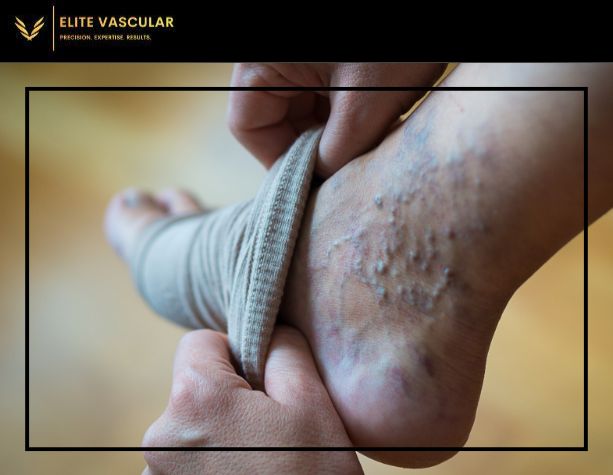- admin
- 0 Comments
Introduction
Veins blowout refers to a vein that has broken, with blood from the broke vein now small seeping out into tissues surrounding it. This is generally a benign and common condition, although it can be troubling to many. This knowledge is not intended to be dire but better understood so that should a vein blow, you have an idea of what it means and how best to proceed.
What is a Blown Vein?
A blown vein is when the wall of a vein ruptures and blood either leaks into other areas or outside the body. It can happen when blood draws, IV insertions or injections take place. The term “blown vein” may sound a bit scary but it is usually just a minor injury that can be treated with some basic first aid and time.
Common Causes of a Blown Vein
There are lots of factors that could cause a blown vein.
- Incorrect needle placement: Wrong angle or depth when the vein is punctured during insertion
- Brittle Veins: There are people who have particularly fragile veins after the passage of time, certain medical condition, or long-term IV therapy.
- Moving: You can damage the vein if you jostle or move needle/catheter too much after they have been placed.
- High pressure: Injecting fluids too fast or with high pressures may cause the vein to burst.
- Multiple Punctures: When doctors try to place a needle into the same vein, it can cause injury of that specific blood vessel with rising chances for collapsing.
Symptoms of a Blown Vein
Determine that a vein has blown. Common symptoms include:
- Ecchymosed: A large discolored area around the puncture.
- Inflammation: Blood leaking from the vein can cause the skin around it to become painful or swollen.
- Pain: A blown vein is often quite painful, especially in the region of the rupture.
- Tenderness: The area may hurt if you touch it.
- Noticeable Vein Damage: You may see or feel the varicose vein under your skin.
What to do as soon as a vein blows
Prompt Actions If You Have a Blown Vein:
- Halt the Process: Stop all IV or injection filling to minimize further injury.
- Use Pressure: Light pressure can also be applied to the area in order to stop any bleeding and decrease swelling.
- Raise the affected Limb: If you can, place the damaged limb higher above your body so less blood runs to that area.
- Cold Compress: apply ice on the area to minimize swelling and reduce bruising.
- Watch for symptoms: Watch to see if your symptom is getting worse.
Can a Blown Vein Be Fatal?
Blown Veins Are Not Typically Deadly While they can be a health concern, a blown vein is rarely life threatening. But there is the rare exception where things can go wrong.
Infection: The biggest outcome worst of all is from an infection; which can lead to life-altering or life-threatening health problems. Look for any signs of infection like redness, warmth, pus or fever.
Phlebitis (inflammation of the vein) with pain and swelling.
Thrombosis: A blood clot is formed at site of damaged vein which can be life threatening if it travels to the lungs (pulmonary embolism).
Also read: Can Blown Veins Really Kill You? A Guide to Prevention and Treatment for essential information on preventing and treating blown veins effectively.
Preventing Blown Veins
Although not all blown veins can be otherwise avoided, there are things that you can do to minimize the risk of this happening.
Do the Technique Correctly: Make sure to insert needles properly & in proper angles.
Immobilize the Limb: Limit movement during and after the surgery.
Choose the correct size of needle or catheter for the vein in that particular patient.
Hydration: Make sure the patient is well-hydrated, which makes for easier access to veins.
Rotate Sites: Do not use the same vein each time to give them a chance heal.
Managing a Blown Vein
Here are some steps you should bear in mind when dealing with a blown vein:
Limb at Rest: make sure that the affected limb is in a relaxed state to help recover your vein and also try not moving it around, yet raise it over heat level.
Ice Pack: However, we have resolution for that Ice pack should be applied multiple times a day in order to minimize the swelling.
Use Warm Compress After 48hours – Switch to warm compress and allow blood flow to the region for faster recovery.
Watch for Symptoms of Infection: Observe the wound daily to detect signs and symptoms you have an infection on the site then visit a health care provider if necessary
Seek the Advice of a Healthcare Professional: If your symptoms do not get better or worsen contact your healthcare provider.
When to Seek Medical Help
If you experience any of the following, get medical help.
Excruciating Pain: Pain not relieved with bedside care
Worsened swelling: Swelling that is actually getting worse.
Any redness, warmth, pus or fever may be a sign of infection.
Movement of the Limb: No move from a comfortable limb.
Signs include persistent bruising.
Conclusion
While a blown vein can be an ordinary and easily treatable issue, knowing the risks and realities of it occurring can allay fears as well ensure proper treatment. Though rarely life threatening, a blown vein can lead to further complications in some cases. By knowing what to do for prevention and management of it, you can help prevent complications that lead to slower healing. If your symptoms persist, worsen and you become concerned always seek medical attention.
